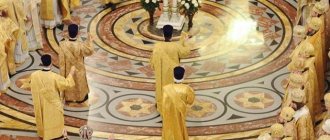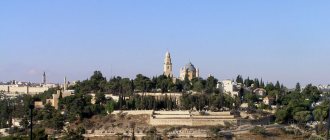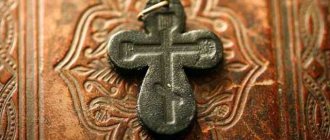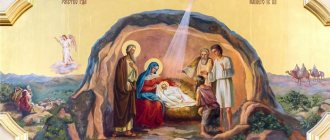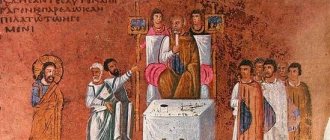The eight-pointed star is considered a fairly common symbol, which is actively used in esotericism. It can also be found in various religions. It evokes associations with order and balance between the spiritual and material. For the eight-pointed star to work, the meaning of the symbol must be taken into account.
The eight-pointed star is considered a common sign.
Octogram meaning
Looking at the octagonal symbol, you can see two crosses aligned at the centers. If we turn to esotericism, they symbolize the balance and harmony of cosmic energy. Also, the unusual star consists of squares superimposed on each other. These geometric figures denote fundamentality, and the four angles indicate orderliness and proportionality of the universe.
From the point of view of numerology, the “star” symbol is closely related to the number 8, which represents infinity. It means the continuous cycle that the universe goes through: from birth to death. Often this sign can be found in heraldry, for example, on flags, coats of arms or orders.
The octogram is a popular figure in many religions and cultures.
Christianity calls the octagonal star of Bethlehem and depicts it on the icons of the Mother of God. According to theologians, it was she who illuminated the way for the Magi, notifying the world about the birth of Jesus. Orthodoxy gives this sign its own meaning:
- harmonious symbiosis of the spiritual with the material;
- immortal life;
- Paradise;
- Heavenly Kingdom;
- the finitude of physical nature and the infinity of spirit.
The Church considers the seven rays of the figure as separate days of the creation of the material world, and the eighth refers to the spiritual world. Looking at the eight-pointed figure, an Orthodox Christian must remember that his body is perishable, but his spirit is eternal. As an adherent of the teachings of Christ, he must bring the light of knowledge to people, turning lost souls to faith.
History of the Star of Bethlehem
The first image of the holy sign was five-pointed, according to the number of wounds on the body of Christ. Five denoted the main sense organs and symbolized the human essence of the Savior. The number of rays did not change until the Middle Ages. With the development of Satanism, cult members began to use the symbol for their own purposes, thereby desecrating the Lord God. So, by the end of the 15th century, the star became six-rayed.
In Rus', the eight-pointed figure was used even before Epiphany. It was worn by magicians, depicting the corresponding planet next to each ray. The pagans endowed the sign with the divine power inherent in the main idol, and placed it on various household items or military banners. With the advent of Christianity, the Star of Bethlehem acquired a completely different meaning, because now it was associated with the Nativity of Christ.
The Star of Bethlehem was associated with the Nativity of Christ
Magic powers
Occultists attribute magical properties to the eight-pointed star. It is used for rituals and making amulets. It is believed that the symbol promotes the development of clairvoyance and can be used as a talisman against dark forces.
The power of the octogram lies in its ability to cognize harmony and organize the inner world of the soul. It is believed that the octagonal star helps in fulfilling desires and reveals all the secret signs of fate.
An amulet with her image will help develop creativity and talent. The sign will give its owner the strength to overcome any obstacles and achieve any goal. It is used to cleanse vital energy and protect against negative influences. Images of the sign are applied to amulets and even to the body in the form of protective tattoos.
What is the star of the Virgin Mary
As mentioned above, the octagonal symbol is present on almost all images of the Mother of God - hence its very name. The importance of this sign for Orthodoxy can be traced by its location. On the icons, the eight-pointed figure is depicted on the head and shoulders of the Blessed Virgin Mary. Theologians interpret this as the secret of the Mother of God, which is kept by the Jerusalem star.
For Orthodox Christians, the octogram means the Kingdom of Heaven, and the Mother of God is the Intercessor of people in Heaven. The star figure represents the exit from the earthly world, the acquisition of salvation, and rapprochement with the Creator.
Eight-pointed star in iconography
The holy faces of the Mother of God, as a rule, are painted on a golden background, which signifies the Holy Light. There are also icons with an azure background, symbolizing Heavenly Jerusalem. On the shoulders of the Virgin Mary is depicted a dark burgundy robe with three stars of Bethlehem. They show that throughout her life, from birth to death, the Mother of God remained the Most Pure Virgin.
The image of the “Burning Bush” does not refer to the “star of the Virgin Mary,” even though it depicts an octahedron. Its meaning is similar to another shrine - “Savior in Power”.
The image of the “Burning Bush” does not refer to the “star of the Virgin Mary”
Is it possible to make a talisman yourself?
A talisman made by yourself carries great power and can help in difficult times. Our ancestors preferred not to buy such products, but to make them with their own hands, putting care, love and warmth into them.
The easiest way is to embroider an ornament on fabric, weave a sign from natural threads or leather laces. If you have the skills, you can use wood or metal. The material should be light, and the tools should be new, so as not to convey negativity to the amulet.
Only women can create amulets for their sisters, mothers, grandmothers, close friends or themselves. During manufacturing, you need to think only about something good and imagine how exactly the amulet will help a person.
The amulet will become a reliable assistant and protector of a person who has bright intentions and is ready to invest a lot of effort in creating a family. When using the Lada amulet, you need to not only take it, but also thank the higher powers for your help!
It is also very important to regularly carry out rituals of cleansing and recharging the amulet. Remember that you can use, make or activate an amulet only with bright thoughts and aspirations. An attempt to commit evil deeds using the Lada Mother of God amulet is not only doomed to failure, but can also lead to serious consequences for the owner himself.
Symbol in other religions
It is not known for certain how many centuries the octogram has been used. Researchers can only say that people were familiar with the figure long before the advent of Christianity. Thus, among the ancient Babylonians, the eight-pointed symbol meant the symbol of the goddess Ishtar, the patroness of love, passion and fertility.
In Ancient Egypt, the octagonal sign represented the divine pantheon, consisting of an equal number of men and women. These deities created the world, gave it life, and then stood guard over its balance.
Before the Baptism of Rus', the Slavs revered the Chaga goddess of love, Lada, through the “star” symbol. For them, the sign had a double meaning: home comfort and safety, as well as a broader meaning - sunlight. Our ancestors applied the solar sign to weapons, shields or military clothing to protect themselves from death.
In Hinduism, the octogram is considered a symbol of the goddess Lakshmi. The eight corners of the squares superimposed on each other represent the gifts that the deity shares with people: wisdom, material wealth, luck, health, satiety, family, prosperity, victory.
Buddhists call the eight-pointed wheel of dharma. The Buddha's teaching says that as long as the wheel turns, a person is free from the passions that oppress his soul. The rays of the figure symbolize those virtues that help to remain free from attachments: speech, memory, concentration, lifestyle, worldview, willpower, behavior, intentions.
Buddhists call the eight-pointed wheel of dharma
Occultism calls the octogram the star of Chaos. Followers of this movement believe that the symbol has power and inexhaustible energy, like the element that gave birth to it.
The eight-pointed sign, so popular among modern magicians, was invented by the British science fiction writer M. Moorcock.
Author's advice
Adepts of secret science use the octagon to conduct rituals. They often wear pendants in the form of this symbol, believing that it helps them concentrate on important tasks, strengthens self-confidence, and calms chaotic thoughts.
In every culture, the octagonal star has its own meaning. For Orthodoxy, it is a guide, showing us the path leading to the Lord. This symbol, both in past times and today, is significant for Christianity.
If you find an error, please select a piece of text and press Ctrl+Enter.
West and East
They seem to be trying to convince us that in the West there has always been one culture, and in the East another, that the confrontation that took place between them for many centuries was something inevitable and absolutely natural.
Battle of Yarmouk between Byzantium and the Arab Islamic Caliphate in 636.
Siege of Rhodes in 1480.
The above images show various episodes of the long-term confrontation between certain two sides. On all of them the flags and symbols of the fighting sides are clearly visible. It is believed that all these were wars between “Western and Eastern civilizations” (as they say now). All of them are divided into different periods by official history, be it the wars against the Arab Caliphate in the 7th-8th centuries, the Crusades of the 11th-13th centuries, or the Ottoman-Habsburg wars of the 16th-18th centuries. Official history has described the events of the last thousand years in such a confusing and illogical way that it is almost impossible for an ordinary person to understand all this confusion alone. And everything was done so specially. Because if they wrote everything as it is, people would quickly understand what was happening. But all these arguments, unfortunately, are powerless against the huge historical machine and its self-reproducing program in people’s heads. As mentioned earlier, our weapon against lies is symbols. They are the ones who will reveal the entire fraud.
Take a look at the image of the seal of King Richard 1st of England:
Seal of King Richard 1st of England (reigned from 1189 to 1199).
Before we continue, I want to make a quick note. The seal of the King of England is not just some dummy picture. This is the most important attribute associated directly with the head of state. According to information taken from the official website of the British Royal Family, the tradition of making royal seals began in the 11th century and continues to this day. These seals are used by monarchs to approve various documents instead of signatures. Each seal is made in a single copy.
Someone will probably say: “Well, what’s wrong with that? Well, they put some ancient pagan symbols on it, that’s all.”
However, I want to remind you that this is the seal of the same Richard 1st, who personally participated in the midst of the Crusades at the Battle of Arsuf in 1191. In this battle, the crusaders fought with the troops of Saladin, who was the leader of the Muslim military campaign against the crusaders. Saladin was also the Sultan of Egypt and Syria.
Portrait of Saladin. The illustration is taken from Andre Thevet's - Les vrais pourtraits et vies des hommes illustres (Paris, 1584).
(Personally, he reminds me more of a Vedic sorcerer than a sultan, or maybe our ideas about what someone should have looked like are very distorted?)
According to data from Wikipedia, this battle became one of the largest and key for the crusaders, since thanks to victory in it, they managed to regain control of the coastal strip of the Mediterranean Sea.
And why then would Richard 1st put on his seal the symbols used by his enemies? Will you say that he or the people did not know anything about the Muslims against whom the war was waged? No, this is simply impossible, if only because, according to the same sources, in 1188 in England (and partly in France) the so-called “Saladin Tithe, or the Aid of 1188” was introduced in order to raise funds for another crusade against the Muslims, who in 1187 dared to oust Christians from Jerusalem. As for Richard 1st and his seal, he just ascended the throne in 1189, and he could not “not know” about everything that was happening in the world.
Well, okay, let’s say Richard the 1st was just strange and for some reason decided to appropriate the symbol of the enemies of the crown for his seal, but what to do with this? Pay attention to the floor in the hall:
Interior view of St. Paul's Cathedral, London, England. Image taken from "A survey of the cities of London and Westminster" by John Strype (1720), an updated edition of the original "A Survey of London" by John Stow (1598).
8-pointed stars are clearly visible on the floor. The same stars that usually appear on flags along with crescents. How is it that the empire, which directly and indirectly participated in many years of wars against Muslims, lays tiles with enemy symbols in one of the main temples of the capital? This is, after all, one of the main churches in London, people go there who could well have participated in those same crusades, and wouldn’t all this really raise questions in their minds?
Imagine if in Moscow, after the end of the Second World War, paving stones in the form of swastikas were laid out on Red Square.
Even though some people are aware of the symbol's original origins, what would the public reaction be? Obviously, no one would allow this to happen. But why do we see a situation similar to the one I described above in St. Paul's Cathedral? Either this symbol was much larger than it is now represented to us, or this temple was built much earlier than stated in official sources (1710). Now there are no such tiles in the temple (instead there is a black and white mosaic), I don’t know how long ago they were removed. But under the cathedral there is an underground floor called the crypt, and there the tiles are more interesting (perhaps even original):
A skeptical reader may well think that this is all some kind of misunderstanding. “Well, just think, some kind of star, stars were drawn always and everywhere, with one or two rays more or less, what’s the difference? And the moon (or the sun) generally looms in the sky all the time, why not draw them somewhere?”
However, I'm afraid that with symbols nothing is ever so simple. And to the great regret of historians, but to the great happiness of researchers like us, these symbols can reveal extremely interesting details. And the deeper we dig, the more shocking the results will be.
